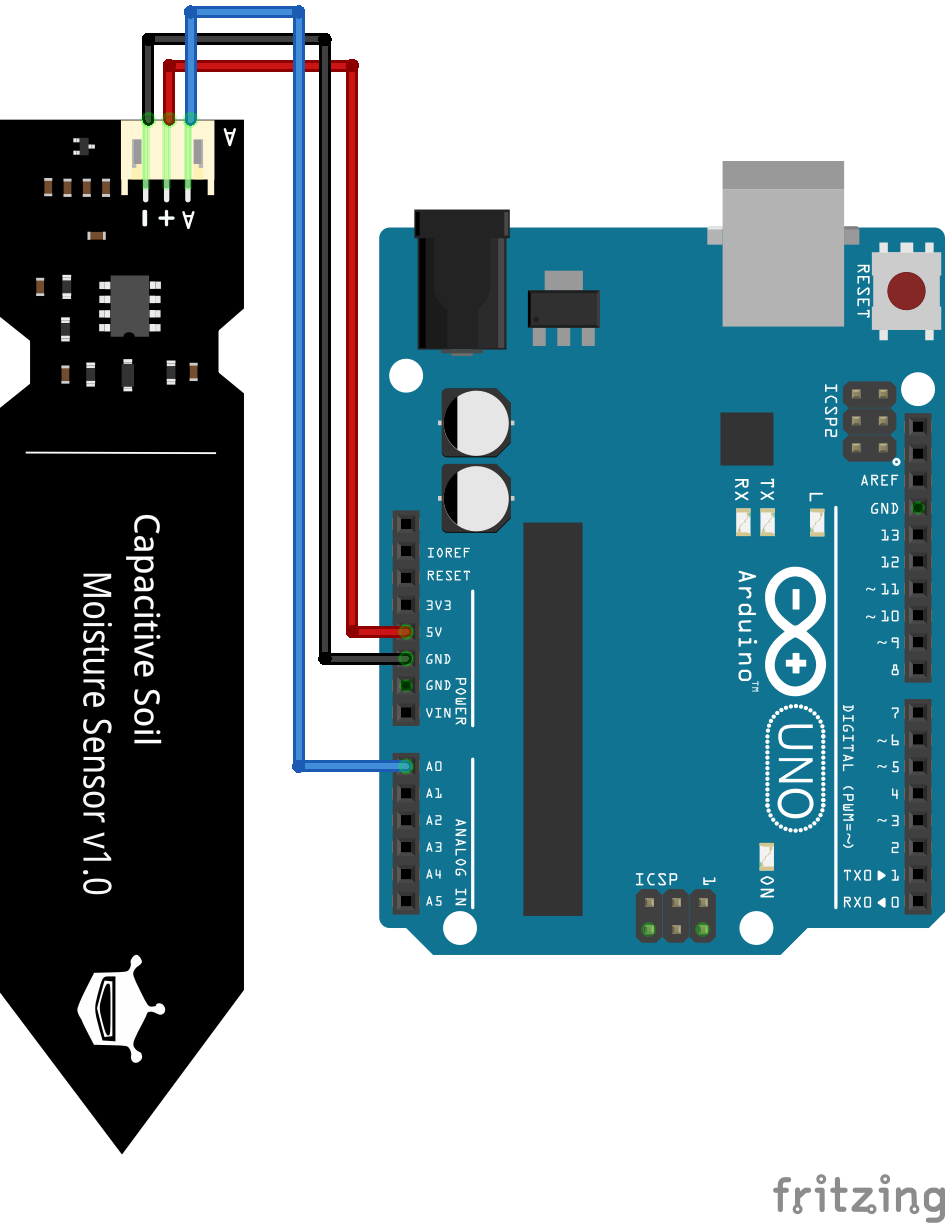

Relevant code in my own sketch is: pinMode(0, OUTPUT) //Configuramos los pines digitales que alimentan el Watermark1

Subtract, calculate equivalente resistor for the voltage and know resistor, and you get a value. The code is the one from the same project. using 2 more D outputs and 2 more Analog inputs The schametic is exactly the one you see in the linked page:īut, replicated 2 times. And what's worse, it may work for some time and then stop working, which is really scary for us as a provider Im starting to suspect the installation process (Believe me I've read all the guidelines from manufacturer) is extremely picky.


The other one worked good for several weeks, maybe 1.5 or 2 months, showing all the watering cycles, but then it started to keep going down as well not seeing any more water, like the other one. But it still doesn't see the humidity when they water the crop.
SOIL MOISTURE SENSOR ARDUINO FULL
We made sure it made full contact with the soil by pouring a good mix of dirt and water in the gap, and it got pretty solid to the ground. I tried using a digital output for GND, driving it LOW when measuring that sensor, and setting it as INPUT while measuring the other sensor, but for some reason it didn't make any changeĢ.-Other issue Im having is in 2 of the 3 fields I've installed it, in one of them the sensor has never "seen" any water from the irrigation, it only slowly dropped from saturation (installation) to a total dry reading after weeks. My guess is that it is due to current flowing from one sensor thru the soil to the other and then to ground thru it's 4.7K resistors, thus altering the "probe" resistor value. It also ocurrs when they are placed in the same soil, 1 or 2 ft away. But I still have these 2 issues:ġ.-When I duplicate the driving circuit to use 2 sensors, I see a big resistance increase (500 instead of 300) when both sensors are in the same water glass. I get readings that look very reasonable according to the existing humidity in the sensor, 300-400 Ohm while saturated, several KOhm when dry). Im using the schematic provided by Van der Lee in his vinduino project: Make sure your NodeMCU can be programmed with the Arduino IDE.Koepel, I had already read all the official documentation from the manufacturer, as well as lots of posts on this forum (including the one you pointed out, thanks) regarding these sensors, but I still have issues I want to share with someone who has used them, they are not related to those posted in those forums Modify lines 6 and 7 according to your WiFi SSID and password. Next, load the sketch below to the NodeMCU. The soil moisture sensor connects to the NodeMCU like this: For this project, I will be using the ESP8266 microcontroller, particularly the NodeMCU V2.0 board. The higher the soil moisture, the lower this voltage goes.įor a user to be able to read the soil moisture through WiFi, a microcontroller with wireless network capabilities is required. On the other hand, the analog pin (A0) gives a voltage proportional to the soil moisture. If the soil moisture reaches a value (adjustable through the potentiometer on the module), the digital pin (D0) goes high and the D0-LED on the module turns on. The sensor comes with a LM393 module that helps give out a digital or an analog signal. However, for our intended purpose - which is to simply notify the user if the plant needs watering - this sensor fits the bill. Thus, reading soil moisture through this sensor might not be enough for more complex applications or scientific researches. The type of soil and temperature are other factors that determine soil moisture. The sensor is designed as an electrode whose resistance varies with both the moisture and how deep it is plunged into the soil. Soil moisture is inversely proportional to its resistance, i.e., the higher the water content in the soil, the lower its resistance. The soil moisture sensor for this project is an inexpensive sensor that reads the resistance of the soil. But what if you forgot to water the plants? This multi-part tutorial aims to provide a simple soil moisture sensor that reminds you, via WiFi, that your flora needs a shower.


 0 kommentar(er)
0 kommentar(er)
